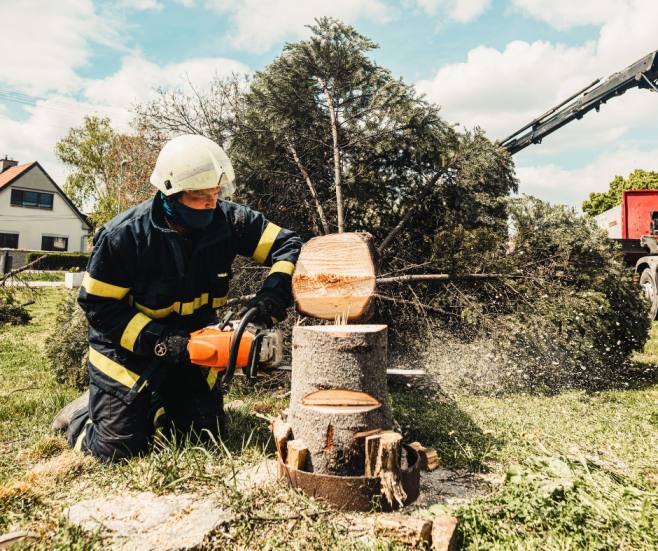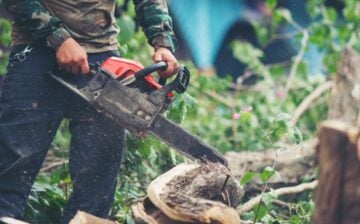You may be inclined to think that you can do anything you want if it’s on your own property, including cutting down trees. After all, you own whatever is on the ground between the boundaries of your property lines, right? Not so fast. In some places, there are heavy fines for cutting down trees, even if they are on your own property. Here are the facts you need to know about cutting down trees that have grown on your property.

Legally, You Don’t Own the Trees on Your Property
It’s true. Just because you happen to own a piece of property within a city or jurisdiction does not mean you automatically own all the trees on your land. In fact, all trees within a city’s limits are actually considered community property. The reason for this is because trees provide significant benefits to everyone in the community, including cleaning the air we all breathe, reducing the greenhouse effect, and providing habitat for local wildlife.
Each city regulates which trees can be trimmed or removed, and if the trees on your property are protected, you may not be able to remove them at all without getting heavily fined. For this reason, it’s recommended that you research the tree removal guidelines in your city before you grab your saw and head out to cut your trees down.
If a Tree is an Immediate Danger to People or Property, You May Be Able to Cut It Down
A tree that represents an immediate danger to people or property may be exempt from city tree removal regulations, but you have to be sure the tree is in fact a danger. If a tree becomes unstable after a major storm, for example, you might not be able to wait for city inspectors to examine the tree because there is such a danger of it falling over. As you might expect, city inspectors can be overwhelmed after a storm, so cutting down the tree to avoid even more destruction might be the appropriate action to take.
Even in a case like this, you should attempt to get the opinion of a certified Professional tree removals company or arborist before cutting down the tree. An arborist will be able to tell you if the tree is truly an immediate danger or if it can wait for city inspection and approval. After all, you may not want to risk the fines that can be levied for cutting down a tree without approval, even if you think the tree presents an immediate threat.
There Are Other Circumstances That Allow You to Cut Down a Tree Without Approval
While you can’t cut down a protected tree without city approval under almost any circumstance, there are times when you don’t need a permit to cut down trees on your property. If the tree is dead or has already fallen, you can remove the tree from your property without notifying the city. You may want to hire an expert to take care of this duty for you because dead trees can be extremely unstable and can fall with the slightest disturbance.
Trees also get sick, and if your tree is unhealthy or diseased, you may be able to cut it down without a permit, especially if it’s become unstable due to rot or decay. In fact, it may be critical for you to get that tree off your land before it poisons the entire root system of the other trees on your property. Again, asking a certified arborist to perform a checkup on your tree will help you determine whether or not a tree needs to come down.
Likewise,
A tree that is infested with bugs can weaken the structure of the tree and cause it to become a danger. Some areas are more prone to this phenomenon than others. For example, southern areas tend to attract termites, which love to infest trees. Be sure to consult the rules in your city for cutting down a tree that has a bug infestation.
Trees that are considered invasive species can be cut down without a permit. These are trees that the city does not want in the community in the first place and will be glad that you’re taking steps to rid your property of them. But remember: a tree that’s considered invasive in one area may not be considered invasive in another. Always check the list of invasive species trees for your city before deciding to cut your tree down.
Conclusion
Cutting down a tree on your property isn’t as straightforward as you may think it is. Check your city’s regulations on tree removal before you take down any trees in your yard so that you avoid getting fined for your activities.
We hope you enjoyed reading Facts for Cutting Down Trees on Your Own Property. If you like this post and want to continue reading more home tips, visit: Smarter Renovation and Home Improvement Tips
Have Experience in the Moving Industry? Want an Additional Income Stream? Work With All Around Moving!
Apply your expertise in the moving industry while earning extra income. We share profits 50-50 with you from all jobs you book with us.Click here to learn more.




